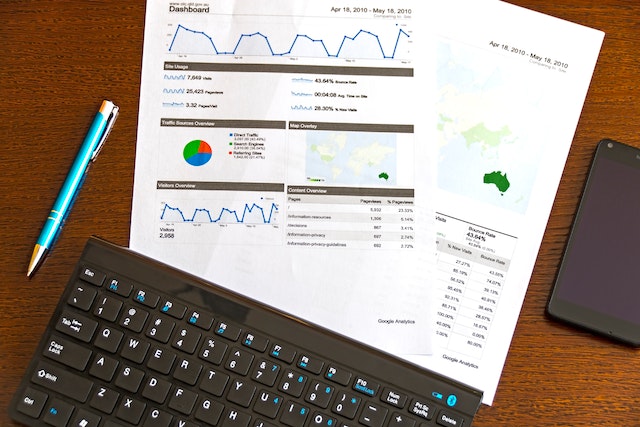We live in a world where technological advances go hand in hand with advanced computer fraud. People cannot do without computers, that’s why pc security is a priority for many companies and employees. We often neglect basic security precaution measures and they are detrimental to the company or personal reputation, career, and overall success.
With antivirus software, you can avoid some dangers, but there are many other sophisticated ways to penetrate your data. The main tip is to be prudent about any unknown files and be wary of email attachments. In this article, you will learn 7 simple steps to ensure computer security. Follow all of them and your data will always be safe.
#1 Encrypt Sensitive Files Stored Locally
With so many security services, encryption remains a crucial form of protection against fraudsters willing to intrude on your sensitive data online or directly from your device. This protection system allows the owner to set an encryption key or password to access files. You are the only person who knows the secret combination but very often, hackers manage to overcome this protection layer.
Windows and Mac OS have built-in file-encryption features, but they do not provide a high-security level. There are a lot of decent encryption programs that are free of charge. However, many are difficult to use. When choosing encryption, make sure it is legal in your region and encrypt the whole device.
#2 Encrypt Private Information Stored in the Cloud
Today people rely on cloud storage, and despite its many advantages, you should always care about security issues. However, it’s not recommended to store sensitive or highly private data in the cloud.
Once you have no choice, consider no one has access to your cloud service or email password. Make up a strong sign as most frauds happen because of primitive passwords. Resort to cloud backup services carefully as they may pose a threat to your private data security.
Another option is to use tools for encrypting private files in Dropbox, OneDrive, etc. There is much decent software like TrueCrypt and B1 Free Archiver that is easy to use and does not require additional costs.
#3 Adjust Browser Settings
You can set the security level in your browser to ensure cyber fraud protection. It helps to reduce the penetration risks from viruses and hackers. You will get notifications about which sites are not secure to visit and even disable you to open the page. Many people ignore this precautionary measure vital to maintaining data security, but when the attack happens, they highly regret it.
So all you have to do is go into your browser settings and make the necessary adjustments. Thankfully many browsers provide detailed instructions for setting an additional layer of protection. In any other unclear case, go to the internet and find a guide for security settings. Generally, it takes a few minutes and does not require additional installments.
#4 Install Antivirus and Anti-spyware Software
Using antivirus software is the most popular way to secure your internet-connected device. It may be challenging to choose an antivirus tool as there are plenty of decent options in the market. You can install a free or paid program and choose time frames. There is universal software able to provide a reasonable security level and powerful tools for the highest level of protection.
A lot of antivirus programs have built-in anti-spyware, but there are special tools. They will help protect the device from Trojans, keyloggers, cookie trackers, etc.
#5 Use Credible VPN Services
VPN services are a perfect way to secure online browsing. It will help you to have internet traffic encrypted. This tunnels traffic through an intermediary server in a specific location. Choose the server location that will enable a fast content unblocking speed.
Many free VPN programs provide a decent security level, but it’d be better to choose a paid option with a free trial period. Free VPN tools may have limited functionality, but it depends on your needs. Do not pay a lot of money for services you haven’t tested. Moreover, some programs make your data vulnerable to penetrations. Carefully choose the VPN tool, read reviews, and check its privacy policy.
#6 Ensure Workspace Security
The simplest way to ensure data security on the computer is to keep an eye on it. Mind that leaving your workplace with all programs and folders opened is dangerous. When people see a computer without an owner, they may unintentionally see sensitive information. Thus, close all folders, close the laptop or set a sleep mode if you leave the computer without supervision.
Another great solution is to set up a screen recorder for a PC in case your computer is in a crowded place, such as an office. In such a way, you will know whom to blame and see which aspects require protection on your device.
#7 Maintain Security Updates
Keeping up with software and security updates is an integral component on the way to computer safety. It provides you with the opportunity to manage device vulnerabilities. Do not neglect to update notifications or set them at a specific time convenient to you.
However, there is a risk of getting a fake notification from hackers. Before clicking links, make sure it is a real update on the Internet by searching their popup text. Both the OS and all software on your computer should be updated, so be prudent.
Conclusion
Now you understand the importance of pc security and know 7 simple ways to protect the hardware. No matter what data you have on the computer, it’s crucial to always be prudent and ready for security challenges. Do not lose control and address specialists if facing unexpected problems.













